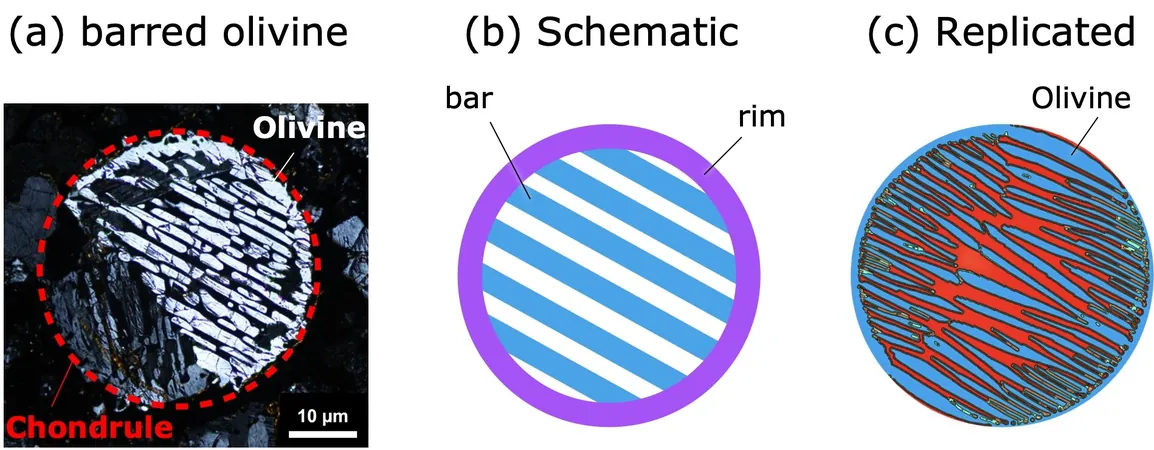
Unlocking Cosmic Secrets: The Formation of Barred Olivine Crystals in Chondrules
2025-05-23
Author: Siti
A Breakthrough in Cosmic Mineral Studies!
Astounding new research from a collaboration of scientists at Nagoya City University, Tohoku University, and other esteemed institutions has shed light on the mysterious formation of barred olivine — an extraordinary mineral texture rarely found on Earth, yet crucial for understanding our solar system's infancy.
What Are Chondrules and Why Do They Matter?
Chondrules are fascinating spherical particles, measuring only a few millimeters in diameter, discovered in meteorites. These tiny spheres are often considered windows into the early solar system, acting as time capsules that preserve vital information about the conditions present during its formation.
Revolutionary Simulations Bring Clarity to Chondrule Formation!
Published in the prestigious journal Science Advances, this groundbreaking study marks a pivotal moment in our understanding of cosmic minerals. Under the expert guidance of Associate Professor Hitoshi Miura, the research team successfully reproduced the barred olivine texture through advanced numerical simulations, illuminating the conditions necessary for its creation.
Faster Cooling: A Key Factor!
Utilizing a sophisticated phase-field model, the scientists simulated the rapid cooling processes of molten chondrules in conditions akin to those in space. Astonishingly, they discovered that the formation of barred olivine requires cooling rates surpassing 1°C per second — a rate much swifter than what was previously considered. This revelation suggests that our understanding of chondrule cooling in the vacuum of space may need a substantial reevaluation!
Implications for Future Research!
This exciting discovery not only deepens our comprehension of cosmic mineralogy but also opens new avenues for future research. As scientists continue to unravel the mysteries of our solar system’s formation, the implications of these findings could reshape our knowledge of planetary development and the origins of materials that make up celestial bodies.


 Brasil (PT)
Brasil (PT)
 Canada (EN)
Canada (EN)
 Chile (ES)
Chile (ES)
 Česko (CS)
Česko (CS)
 대한민국 (KO)
대한민국 (KO)
 España (ES)
España (ES)
 France (FR)
France (FR)
 Hong Kong (EN)
Hong Kong (EN)
 Italia (IT)
Italia (IT)
 日本 (JA)
日本 (JA)
 Magyarország (HU)
Magyarország (HU)
 Norge (NO)
Norge (NO)
 Polska (PL)
Polska (PL)
 Schweiz (DE)
Schweiz (DE)
 Singapore (EN)
Singapore (EN)
 Sverige (SV)
Sverige (SV)
 Suomi (FI)
Suomi (FI)
 Türkiye (TR)
Türkiye (TR)
 الإمارات العربية المتحدة (AR)
الإمارات العربية المتحدة (AR)